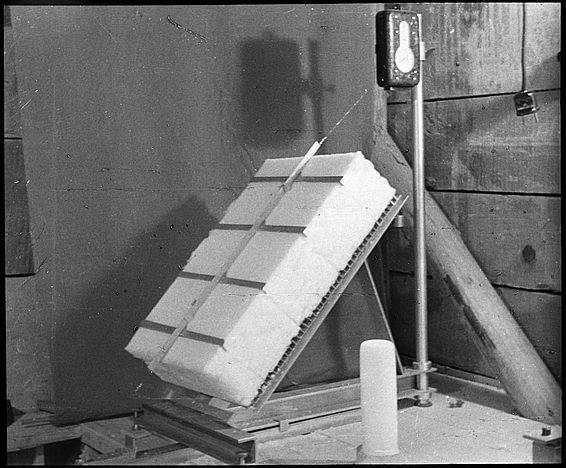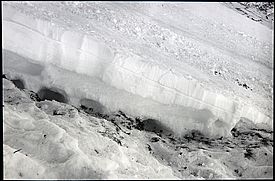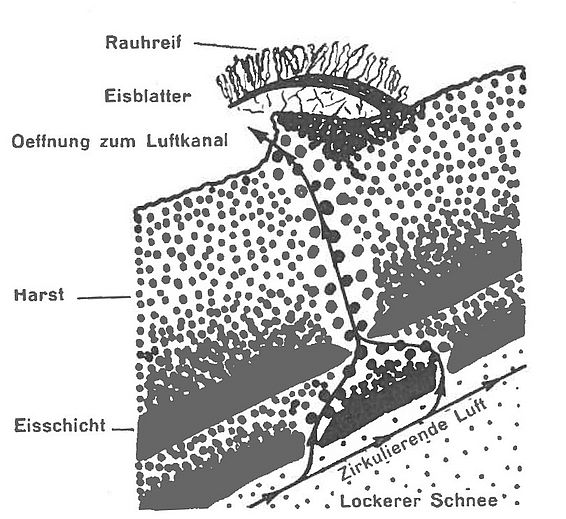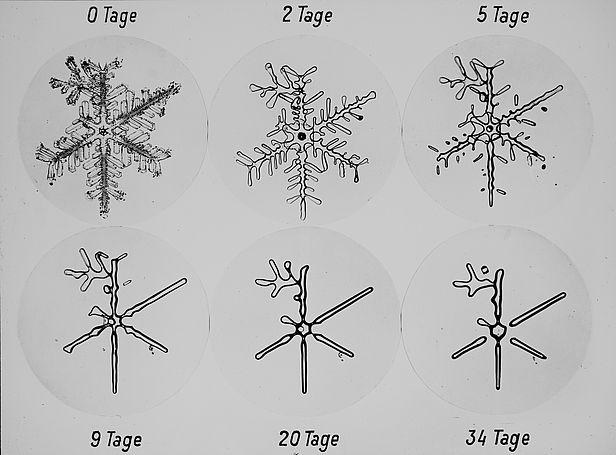24.05.2023 | Jochen Bettzieche | News SLF
The first book of experimental scientific snow research is now available to the public free of charge in digital form.
All pictures on this page are taken from the book "Der Schnee und seine Metamorphose".
One of the first books – if not the first – to be written on snow research has now been digitised and made freely available. Der Schnee und seine Metamorphose ("Snow and Its Metamorphism") was published by multiple authors in 1939 and contains "First results and applications of a systematic investigation of the alpine winter snowpack", according to the subtitle of the 397-page work. Between 1934 and 1938, researchers had carried out numerous experiments at the Weissfluhjoch station near Davos run by the Swiss Snow and Avalanche Research Commission, the forerunner of the SLF. The station is still in operation today, being used by researchers to measure a wide range of daily values during the winter.
Other authors had previously published books about snow. "The big difference from earlier works is the systematic use of field experiments, and especially of laboratory tests," explains Martin Schneebeli, the recently retired head of the SLF's Snow and Atmosphere Research Unit. The book, he says, has a strong scientific focus. Before that, researchers had simply written down their observations. Now, for the first time, the findings were based on experiments, including in the cold laboratory. The six authors came from different backgrounds, but were united by their interest in snow. "They studied all aspects of the subject, from crystal structure to large-scale geological phenomena," says Schneebeli. Among other things, they measured the first complete snowpack energy balance.
What is fascinating is that, even at this early stage, the authors had already described most of the basic principles. One of Schneebeli's favourites is the description of how, on cold nights, moist, relatively warm air moves up through multiple layers of snow on steep, boulder-filled slopes, forming ice sheets there. Also interesting are the pictures of measuring devices, some of which look surprisingly modern, despite being in use some 90 years ago.
Another area that scientists had been studying for the first time was what triggers avalanches and the processes involved in this. "The analysis of the microstructure of snow crystals and how their crystals are oriented was also new," says Schneebeli. Among other things, this resulted in detailed photographs of individual snowflakes and their metamorphism under different conditions.
In the epilogue to his chapter, petrographer Henri Bader wrote: "On the basis of experience to date, there is reason to believe that it will be possible to largely develop snow research into an exact science." In fact, from today's perspective, Schneebeli is certain that what Bader and his colleagues produced was a kind of bible of snow research: "A lot is still valid today, some is outdated, but it's definitely a book that snow researchers need to have read in order to see where it all started."
Metamorphism – origin and meaning
The term 'metamorphism' (or 'metamorphosis') originates in Greek mythology and means 'transformation'. The legends of antiquity feature many examples of gods, humans and mythical creatures transforming themselves or being transformed into animals, plants or rocks, among other things. The Roman poet Ovid describes around 250 such transformations in his work Metamorphoses. In today's language, 'metamorphosis' is synonymous with a change of shape, form, design or structure, as well as transformation more generally.
Contact ¶
Medienstelle SLF
WSL-Institut für Schnee- und Lawinenforschung SLF
Kommunikation
medien(at)slf.ch
+41 81 417 01 90
Links ¶
-
"Der Schnee und seine Metamorphose", the book for free download (German only)
Copyright ¶
WSL and SLF provide the artwork for imaging of press articles relating to this media release for free. Transferring and saving the images in image databases and saving of images by third parties is not allowed.




